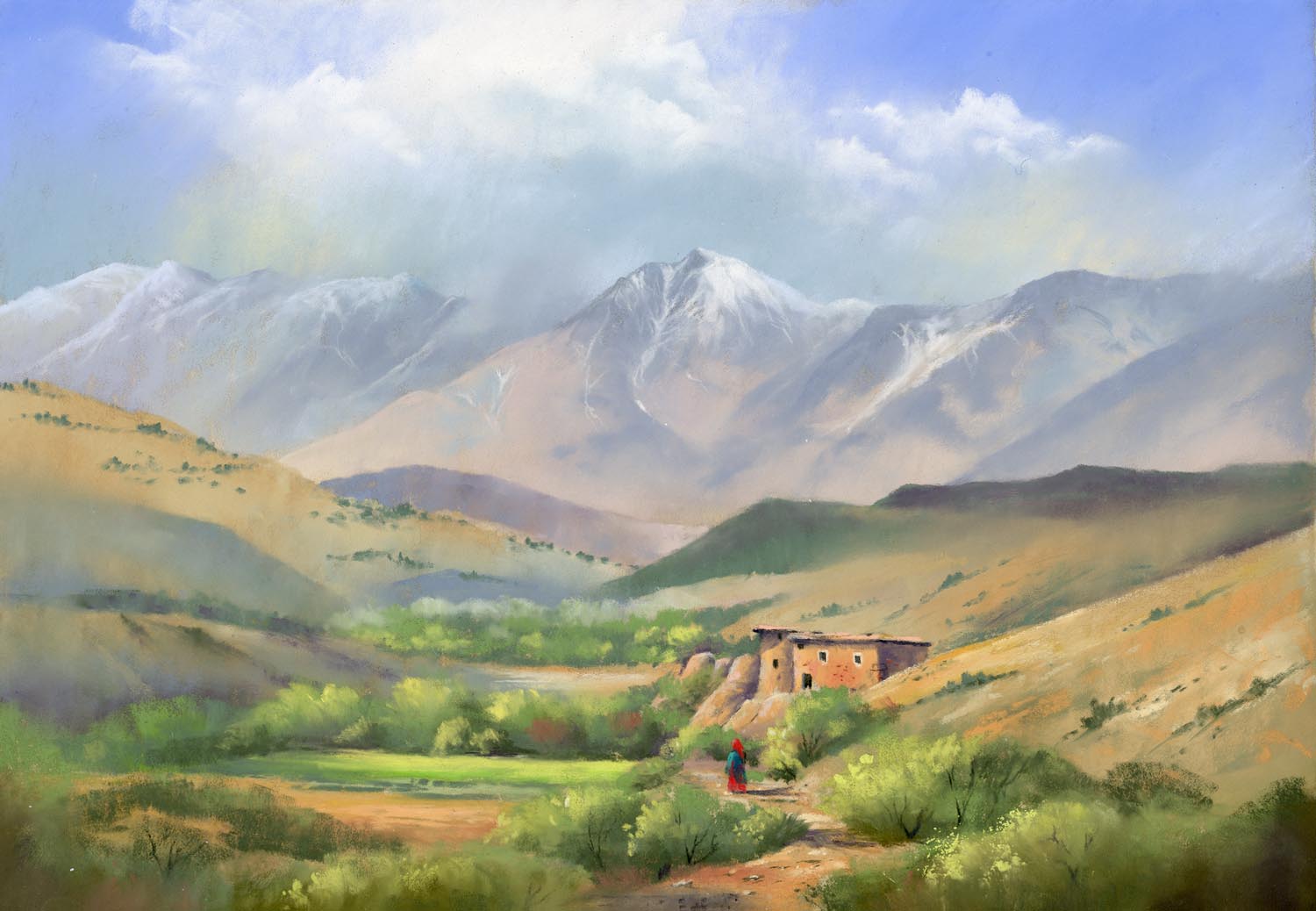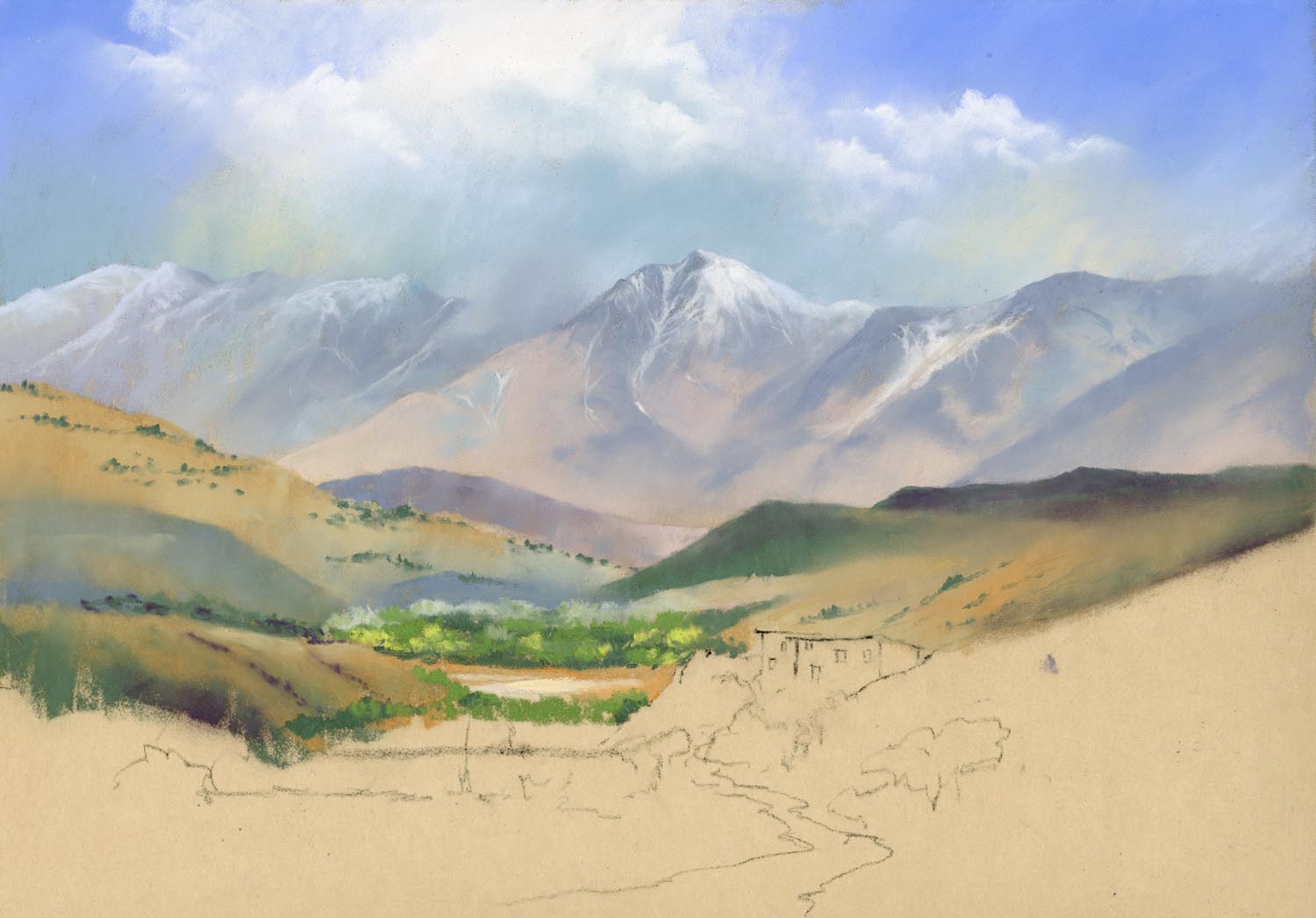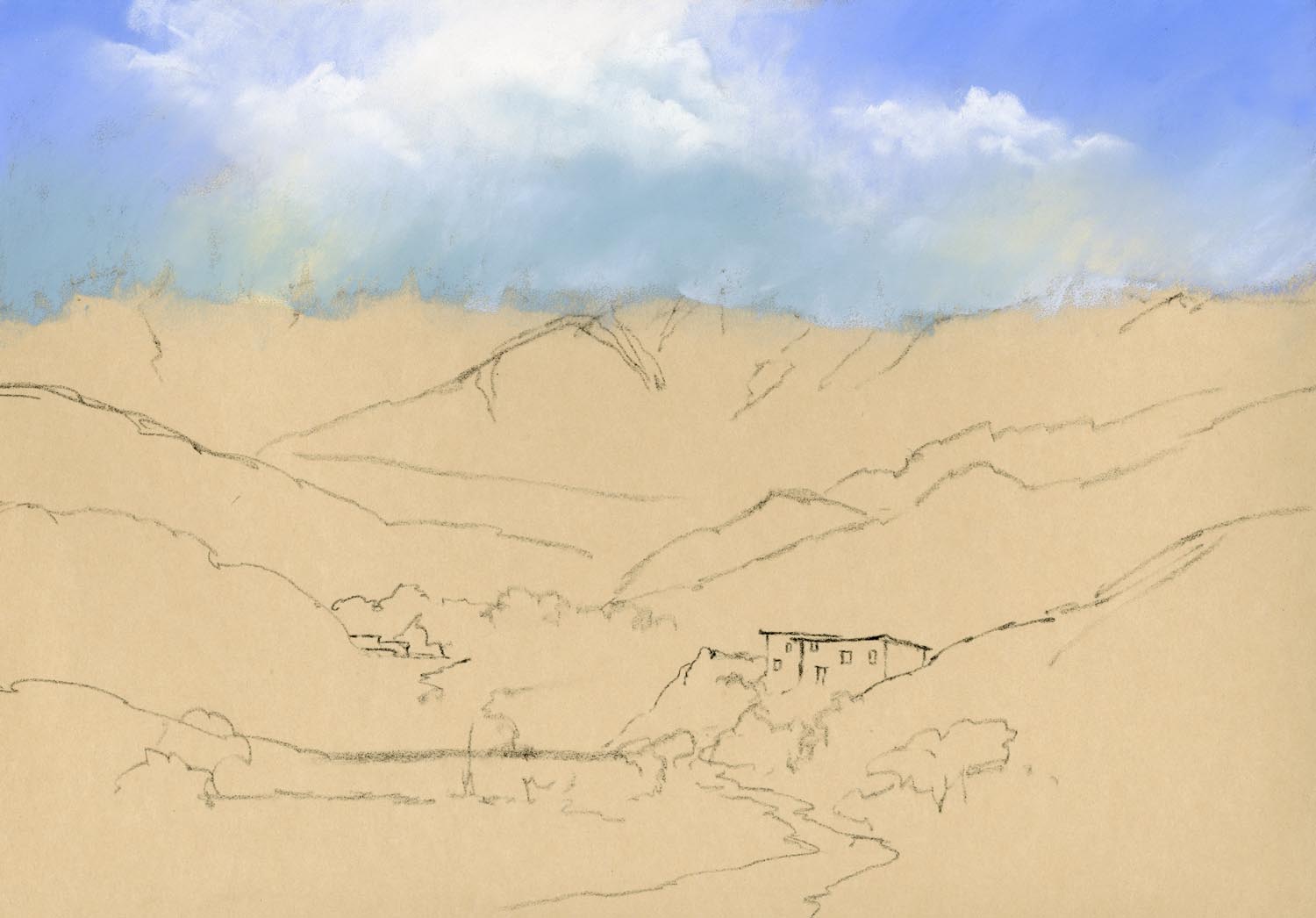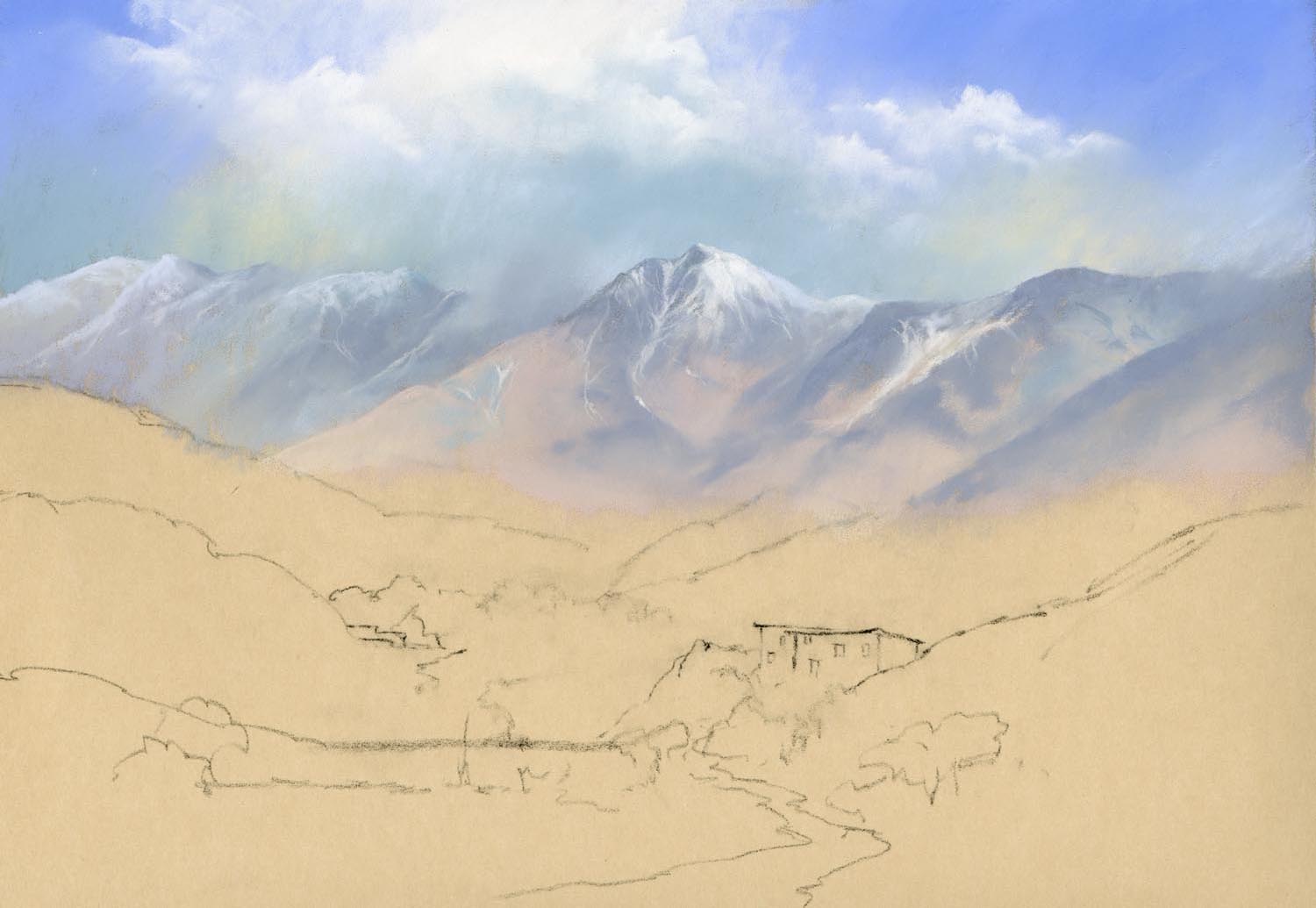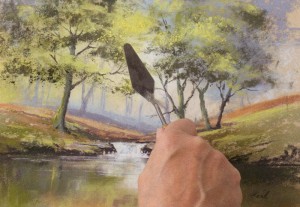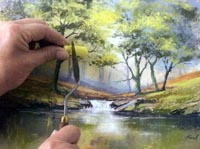My entry for the Cox & Kings competition is finished.The final stage of any painting is a dangerous time. The temptation to put in every detail is great but it must be resisted. In the photograph which I posted on 28th October, (you can see this if you scroll back through my blog) there were a lot of trees and bushes so these have to be simplified. Also the hillsides were dotted with scrubby bushes but to include all of those would be spotty and distracting.
There was no obvious pathway leading the eye into the painting so I created one that led towards my focal point, the building. I had moved the building closer to the wadi so that it fell in a more pleasing location, directly below the main peak of the mountain and within the Golden Section. The strongest tonal contrast is on the building and I have added a figure, a Berber woman in bright clothing which I had found in my 1993 Morocco sketchbook.
I have thoroughly enjoyed this exercise and I want to thank Katie Parsons of Cox and Kings for inviting me to take part. It was the incentive I needed to get painting again after a long absence. I wish my fellow competitors good luck.

